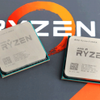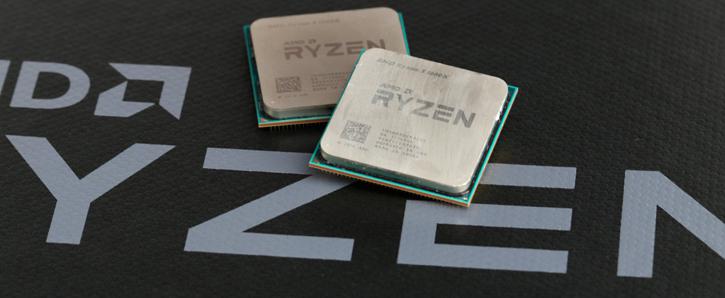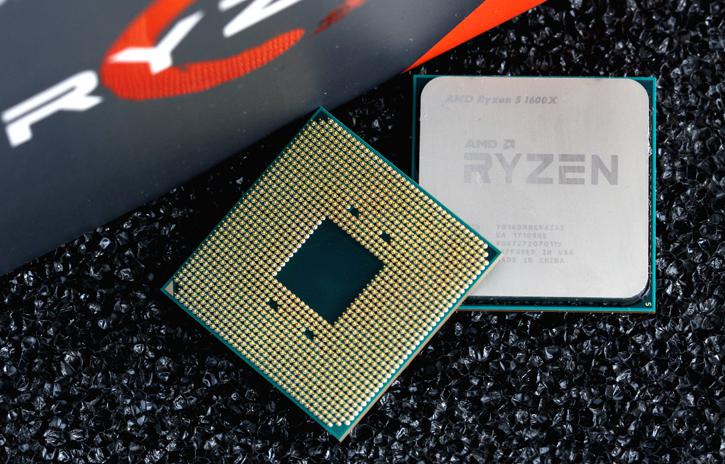Conclusion
The Final Words
After Ryzen 7 the tide has now turned to Ryzen 5, and it has been an interesting time for AMD. The processor launch has been good, but not great. The Ryzen platform is still a little immature. This mainly focuses on memory compatibility and somewhat lower CPU bound game performance. Step by step though AMD is advancing, more game titles get optimized, memory support is improving with each week that passes and the firmware updates bring in more performance as well. The new AGESA 1004 based update indeed offers lower memory latency by a notch and yes, that does improve performance as well. So while the launch probably could have been a bit smoother you also need to factor in that architecture changes for Intel have seen similar evolutionary processes. All these small steps make the Ryzen series processors slowly but steadily stronger and faster.
The Experience
Today's big winner is the six-core Ryzen 5 1600X, the processor is as fast in gaming as the 499 USD Ryzen 7 1800X is. So for half that money (249 USD) you can pick up this processor that looks, feels, heck - even smells the same, you just have two cores less at your disposal. It also tweaks towards 4.0 GHz on just a stock air-cooler, albeit we really recommend a bit of LCS lovin' there. The four-core 1500X is fairly competitive as well, however I feel it would have been nicer to have seen the Turbo frequency at 4.0 GHz for the quad-core unit as well. Admittedly though and I have to state it, I find four-core processors to get less attractive as playing with all the 6 and 8-core processors feels faster and better in your desktop environment and applications.
The RAW Performance
Overall we like what we are seeing with the Ryzen 5, the per core performance most certainly is good enough for what and where it needs to be, especially in this price category. Realistically the performance overall hits a terrific, maybe even baffling, sweet-spot. Combined with 3.7 GHz and 4.0 Turbo frequencies these processors are dressed to impress. As stated, the six-core 1600X hits a sweet-spot, it costs half that of the 1800X yet feels just as fast. I did not have that same feeling with the Ryzen 5 1500X quad-core part. But honestly, the technology arena will be slowly transitioning to six or more core processors in the next 12 to 24 months. For those that are shouting four cores is enough, hey... we had the very same discussion moving from two to four cores, remember? So if you hang on to that thought for a moment, in this year of 2017 would you still purchase a dual-core processor over a four-core one? Nope, and along these lines you need to think as we need to advance in hardware, the software will then follow in this technological evolution. I also do know that a setup like this could last you years as, again, the IPC perf is really good and you have many threads available.
The Gaming Performance
The biggest discussion at Ryzen's launch was 1080p gaming performance. This problem is still here, but not as big as some state it is. Ryzen is a truly great processor series, but it lacks a little in 1080p gaming situations where you are more CPU bound (if you have a fast enough graphics card). There has been much debate on the cause of it, memory latency, latency in-between the CCX modules on the processor, driver issues, Windows 10, game optimizations, benchmarking with a GeForce card over an AMD one, thread schedulers and so on. The reality is simple, the results are what they are. Ryzen 5 and 7 lack a good 10-20% in performance with super fast graphics cards in a lower resolution compared to the fastest clocked Intel SKUs. Now, as this review has shown, it does depend on the game titles a lot as well. We added like eight new games and the differences with these titles look much, much better. For the game titles that do lack a bit of bite, well... you can do quite a bit with the platform to tweak out that difference.
I recommend you to read our tweaking article, as you can gain a lot from tweaking and using higher-frequency memory. To boost your performance, especially for gaming, here are a few generic Guru3D tips:
- Update your motherboard to the latest firmware BIOS, especially the upcoming AGESA 1004 firmware revisions are going to help.
- Make sure you have your memory at at least 2667 MHz with CL16 - 2133 and 2400 MHz will hurt game performance. We recommend 2933 MHz and, if possible, 3200 MHz DDR4.
- For best game performance, set your Windows energy performance mode to HIGH.
- Tweak your processor, we can reach 4.0 GHz on all cores on just air cooling. We have previously used liquid cooling and clocked Ryzen to 4.1 GHz on all cores. This offers a big gain for game performance - but granted, this will eat a bit more energy, 40 to 50 Watts extra under hefty load on all CPU cores.
We will keep an eye on this and when we have to report anything about it we'll update this content. And also in closing on this topic, if you are a little GPU bound or use 2560x1440, this pretty much is a non-issue as perf there is top notch for what the processor needs to deliver. And no, the 1080p performance isn't as big of an issue as some evangelize it to be.
The Memory
The AMD Ryzen platform supports DDR4 1866, 2133, 2400 and even 2667 MHz straight out of the box with two DIMMs. Higher frequencies are motherboard and more importantly firmware dependant. Over the past weeks we found out the hard way that Ryzen processors really like fast frequency memory, hence we sorely recommend you to use at least 2667 MHz DDR4 DIMMs. However, we recommend 2933 or 3200 MHz. Let me again refer to this article so you can see why. Now, this all sounds crisp and clear, but actual memory support on Ryzen systems is a bit of a mess. We have seen 3200 MHz modules from brand A work with a Ryzen 1600X, but not with an 1800X on the very same motherboard and vice versa. In such conditions your motherboard will revert to 2133 or 2400 MHz. Quite annoying and chances currently are still pretty good you'll stumble into it. AMD, the board partners and memory manufacturers have a massive task at hand here to get proper XMP support up-to snuff like Intel offers.
Are you stuck at 2133 or 2400 MHz? Please read my procedural recommendations on this page.
The Power
With this processor now fabbed at 14 nm FinFET the TDP sticks at either 95 or 65 Watts. A full PC at idle will sit in the 50 to 60 Watt range with a dedicated graphics card installed (GeForce GTX 1080 / 16 GB memory / SSD and the motherboard). When we stressed the processors with a Prime 1024M run we reach roughly 125 Watts, that's low enough for what it needs to be. Overall though this is impressive to see. When we game we hover at ~250 Watts, but obviously that factor is dependant on the type of graphics card you use of course. So yeah, these are really good values with a many core product. No complaints here whatsoever and remember, these are all 8-core parts physically, even that 4-core enabled processor.
The Tweak
We used just the stock Wraith LED cooler for overclocking. We reach a stable 4.0 GHz at ALL cores for both processors. With proper liquid cooling and a lucky CPU we have no doubt that you will reach the 4.1 GHz on all cores as well. After that number things will start to get complicated though. The Ryzen 5 itself will be easy to overclock, you could increase the voltage but we advise the AUTO voltage mode really. Then select your multiplier or frequency of choice and you are good to go.
The conclusion
You can see the award already, I'll give both tested processors a great value award. I do have a soft-spot for that six-core Ryzen 5 1600X though. At 249 USD, paired with the B350 120 USD motherboard we used the gains and performances are tremendous value for that money. Tweak that CPU to 4.0 GHz on all cores and your PC eco-system will list green flags all-over. It is fast and you'll have a 12 thread solution. Next to that, it offers nice gaming perf and excellent application threaded performance as Ryzen offers killer single- and multi-threaded performance. The eco-system is fast in matters of storage like M.2, SATA and/or USB 3.1. The step upwards to Ryzen 5 1600X is a proper one for the folks that actually need and waited for a well deserved upgrade, the guys that have been waiting for a price/perf competitive 6-core processor series and the intent to give AMD some well-deserved support after a couple of gruesome years. As such, the 1600X oozes value if paired with the right motherboard. The quad-core Ryzen 5 1500X performs good as well, I have no complaints here other than I would have liked to see it boost to 4.0 GHz stock out of the box. However, the more I test quad-core processors the less excited I am getting about them. A move to six and eight-core processors to me feels like the right thing to do as I do feel my overall desktop experience is much snappier and faster compared to any brand quad-core CPU. But value wise, for 189 USD that four-core CPU is just that, good value. And sure, perhaps more than enough for many. The one thing you need to keep in mind is that Ryzen is a platform in development. Your motherboard will need a few firmware updates in the future, the memory support sometimes can be daunting and icky. But progress has been made in large steps over the last few weeks and slowly but steadily things are maturing properly. Our recommendation sticks, Ryzen processors like fast frequency memory. You start with a 2667 MHz kit but really, we recommend 2933 MHz or 3200 MHz CL16. Motherboards wise the performance will be the same from a 99 USD B350 towards the most expensive 350 USD X370 motherboard, you define the budget and needs in features. Please base your memory purchase choices on what the motherboard manufacturer advises (check their QVL list). Your sweet spot memory might be 2933 MHz with two DIMMs hence for all processor reviews we are moving to that number where possible. Right, that said and done I think this conclusion page has enough information for you to chew over. A Ryzen 1600X paired with the right motherboard could be a tremendous deal that once again drips and oozes pure value and performance. And hey, can't afford a GeForce GTX 1080 Ti or Radeon R9 Fury X? Please understand that the gaming matter mentioned is not at all relevant to you if you are using, say, a graphics card at the performance level of a GeForce GTX 1060/1070 or Radeon RX 480. These actually would be a fantastic match combined with this gem of a 249 USD six-core processor. And the quad-core Ryzen 1500X, well it does really, really well compared to i5 processors in roughly that same price-bracket. And yeah if you are not afraid to tweak and overclock a little, the Ryzen 5 1600 at $219 might something for you too consider. We'll try and review that one asap as well. But honestly, anno 2017 we feel a six or eight-core part is the way to go. And guys, you have thank AMD for all this, bringing value to the PC eco system with many cores.
ATH +++
- Hilbert out
- Sign up to receive a notice when we publish a new article
- Or go back to Guru3D's front page.
“A mind needs books as a sword needs a whetstone, if it is to keep its edge.”




